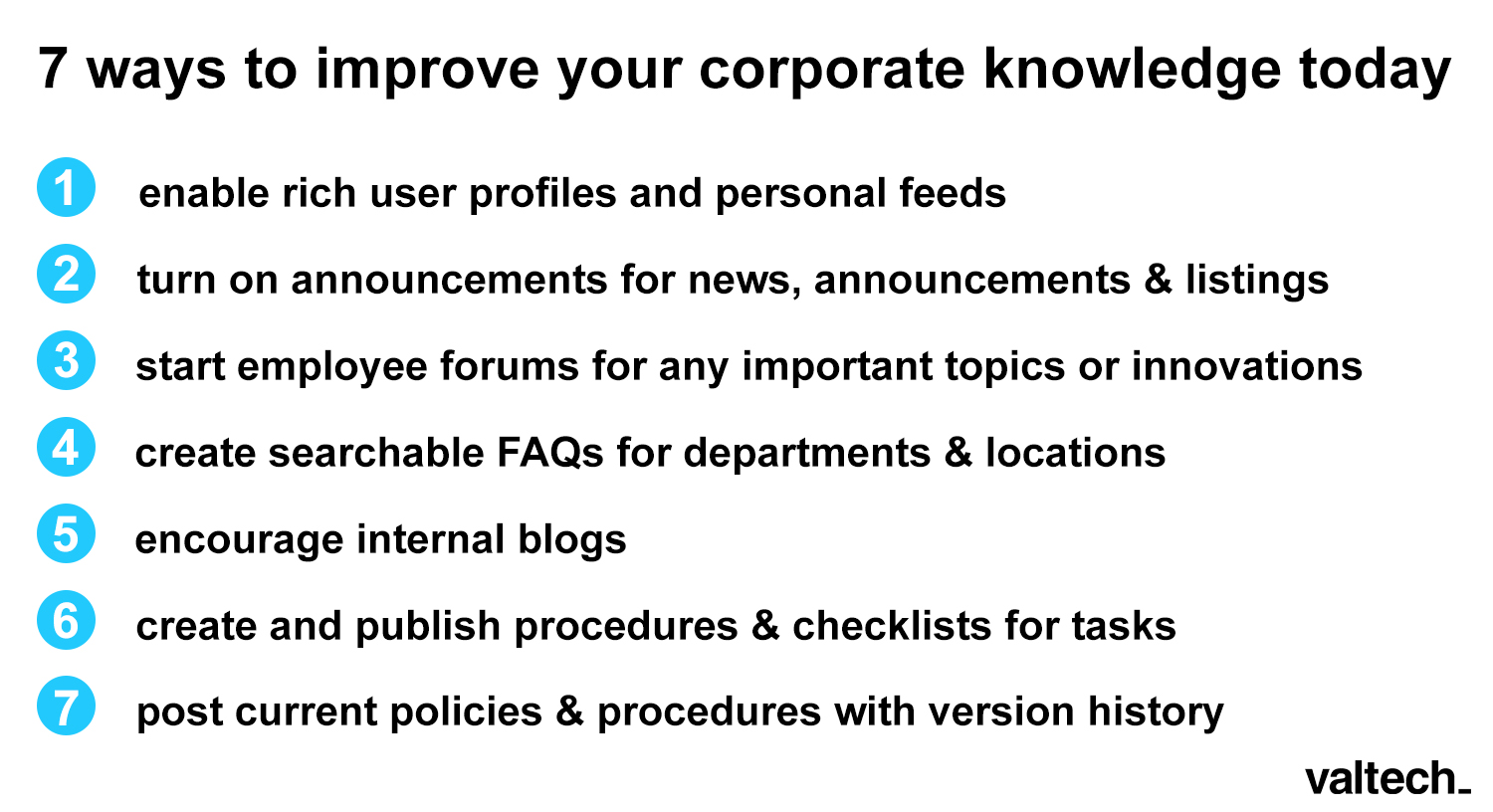For at least the next decade, organizations are as much at risk of losing corporate knowledge from increasing retirement levels as they are to the steepening rise of the contingent workforce. Some companies are prepared and are dealing with it effectively but many are not and are at significant risk of falling behind and losing out to their competitors.
“In the next 10 to 15 years, we’re going to have the greatest transfer of knowledge that’s ever taken place,” says Chip Espinoza, director of organization psychology at Concordia University Irvine in a recent Bloomberg.com article.
The knowledge exodus
The brain-drain due to baby boomer retirement has been looming on the horizon for over 30 years. It began in earnest in 2011 when the first wave of boomers had their 65th birthdays. Since then, 10,000 retirees leave the US workforce EVERY day. Many companies just let them walk out the door with a pleasant sendoff and their career worth of valuable knowledge. The U.S. Census Bureau calculates that by 2020, 55.9 million people in the U.S. will be age 65 or older, and by 2030, that number will reach 72.7 million. The numbers are proportionally equivalent in Canada.
On the other front, the gig economy is picking up steam as more Millennials enter the workforce and ditch the traditional steady permanent job for a more fluid lifestyle and contingent work. Ironically, retired baby boomers are also part of this growing workforce as they look for part time work to keep active and for extra retirement income.
From all parts of the generational spectrum contingent work is a growing global phenomenon and poses almost as big a risk to retaining corporate knowledge and information. Estimates are that already 42 million US workers are contingent and that number is set to grow to 65 million by 2020. Recruiting and managing them is already a big challenge for companies. Capturing the knowledge and intellectual property they possess and produce is an even bigger challenge.
Two habits that need to change
We’ve already explored how to evolve the intranet to meet the needs of today’s workforce, but what are the habits organizations need to change to be able to start capturing baby-boomer knowledge and adding everything the contingent workforce contributes to the success of your company?
The best solution is to significantly reduce email. It’s a bad habit that has grown out of control. It can be worked at incrementally by better leveraging tools you likely already have in place but aren’t being used to their potential. Instead of locking down everything in inboxes, get all of that daily communication, full of rich content, corporate knowledge and detail into places that make that information more open and searchable.
Hand-in-hand with reducing from email is to start implementing a ‘work like a network’ approach.
The network approach provides easier access to all information across all areas of operations, and connects you as quickly as possible to the right people and information to maximize collective knowledge. It also allows and encourages staff across all parts of your organization to effectively participate in ongoing publishing of relevant content that increases the volume and quality of corporate knowledge.
Unlock the inbox
Email kills the spirit of the network. It’s over-used and over-relied upon. These days it should really just be used for non-time sensitive, confidential correspondence, which is pretty well the opposite of the better open, searchable and dynamic approach.
To change these habits, your intranet has to change from a static corporate news, and a policies and procedures repository to a dynamic and relevant digital hub for people to connect and get work done fast. That includes enterprise social tools so internal networks can be created quickly and easily, collaborative project and team sites so people can work together off the same page, and employee-generated publishing forums where anyone across the organization can contribute knowledge and innovation to any topic easily so it can be captured, added to and improved, searched and shared, and used over and over again.
It means a change in thinking and approach to business, but using less email and starting to implement a digital workplace and culture that's based on the principles of a dynamic networked organization and moving away from the more static hierarchies of the industrial age could be the difference between survival and failure.

The list of possibilities depends on each organization, but here are some ideas that have worked well with our clients that you can use today and will help you kick-start your knowledge retention initiatives:
1. Enable rich user profiles and personal feeds
Basic employee information is already synched with your Active Directory or HR systems but consider providing the ability to add to it and encourage your staff to publish important information about themselves. This can include education, languages, special skills or project experience, hobbies, etc. Many systems also allow you to easily add a personal feed so you can post links to interesting articles or insight. Others can then follow you so relevant information is being pushed to them instead of everyone going and finding the same information over and over again.
Some organizations further down the profile path struggle with multiple platforms that all co-exist and all have their own “profile” capabilities. It’s important for organizations to be conscious of this and to centralize on one for employees that is the most searchable, manageable and user friendly.
2. Turn on comments for news, announcements and listings
Comments allow employees to get involved, engaged and learn from each other creating a two-communication platform for direct interactions and staff engagement. It closes the distance in organizational structure when leadership is active in responding to questions and comments.
Some organizations that take this step are challenged with getting only “surface commentary” on articles. A good additional step is to appoint a community manager to respond and engage employees to have some genuine back and forth to get things rolling. One positive, authentic interaction will have a ripple effect.
3. Start employee forums for any important topics or innovation
An open, searchable, and findable topic forum allows everyone to contribute and share their valuable experience and feedback with others and makes sure it doesn’t get erased when staff leaves an organization. It also allows people to connect easily with experts which improves efficiency. Some great examples to start with include:
- Compliance or equipment use best practices
- New staff on-boarding questions and answers
- Innovation engines
- Best practices for business systems
4. Create searchable FAQ’s for departments or locations
There is always someone on every floor, at every office, or location that people turn to for help on how to really get things done. They answer the same questions over and over so consider searchable FAQs for:
- Couriers, parking and after-hour access
- Fire safety procedures and equipment use
- Housekeeping or lunch room rules
- IT or AV equipment
5. Encourage internal blogs
Blogs have become relevant again due to the changing nature of work and organizations. Contingent workers, and those who might not work in an office stand to benefit heavily from blogs. They help make an authentic connection with co-workers when you can’t have water-cooler chats.
They can be leadership blogs, or departmental blogs or a group of people all following one person’s blog. Encouraging anyone to write a blog is a great way to capture corporate knowledge and one of the best ways to connects people in context, discover new insight about your company and customers. It also helps bubble up the leaders of tomorrow.
6. Create and publish procedures and checklists for tasks
There is always somebody on a team or on an office or factory floor who knows how to get things done or knows the little details that will make things run smoothly. Those seemingly routine, almost unnoticeable, day-to-day procedures are critical as staff leave the organization, or when someone needs to fill in for an employee that is sick or temporarily absent. They also make onboarding a new employee more seamless with detailed references to departmental tasks. Ideally the ‘owners’ of this knowledge capture it and keep it up to date, but managing them centrally is also an option. Allowing comments provides a place to capture new ideas or updates.
7. Post current policies and procedures with version history and annotation
Having the latest version easily findable is imperative to build trust and increase use of a digital workplace. Not having the latest policy posted can result in serious reputational and financial liabilities if someone follows an outdated policy and gets injured and the organization is held accountable.
There is also great value in having past versions available to complete corporate history, including approval notes and summaries of changes. Often policies get implemented due to a particular situation or circumstance such as an immediate health and safety issue or the uptake of a new technology, such as social media. Often that corporate knowledge resides with a few senior people and locked away in their inboxes which will get deleted upon their retirement. Understanding why a policy was created in first place provides context down the road when it needs to be revised or even removed.
Please contact us if you need assistance with any part of your organization's knowledge management. We’d be happy to help.






